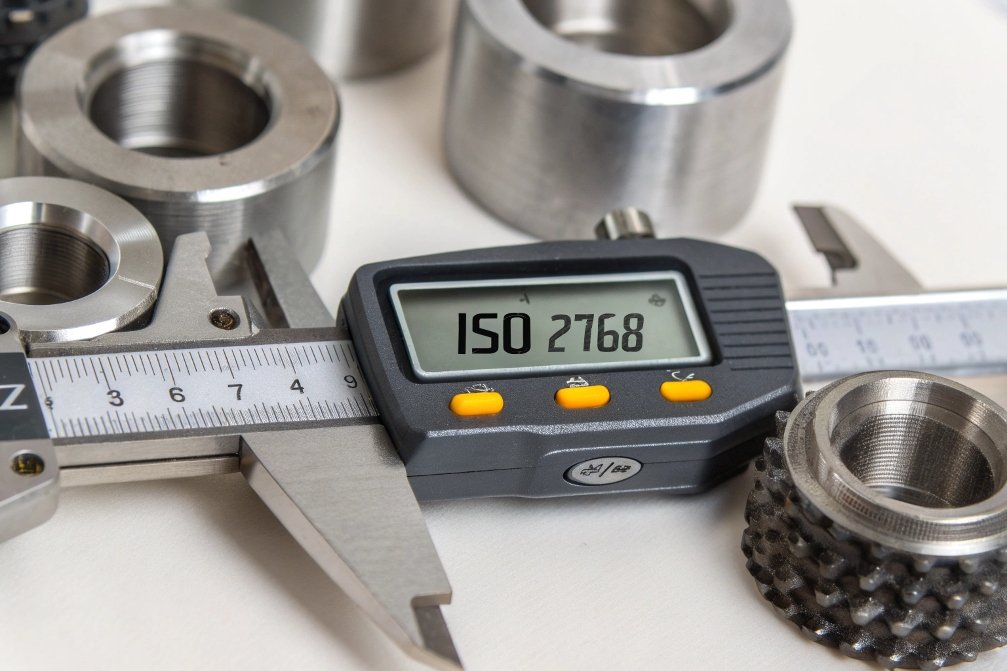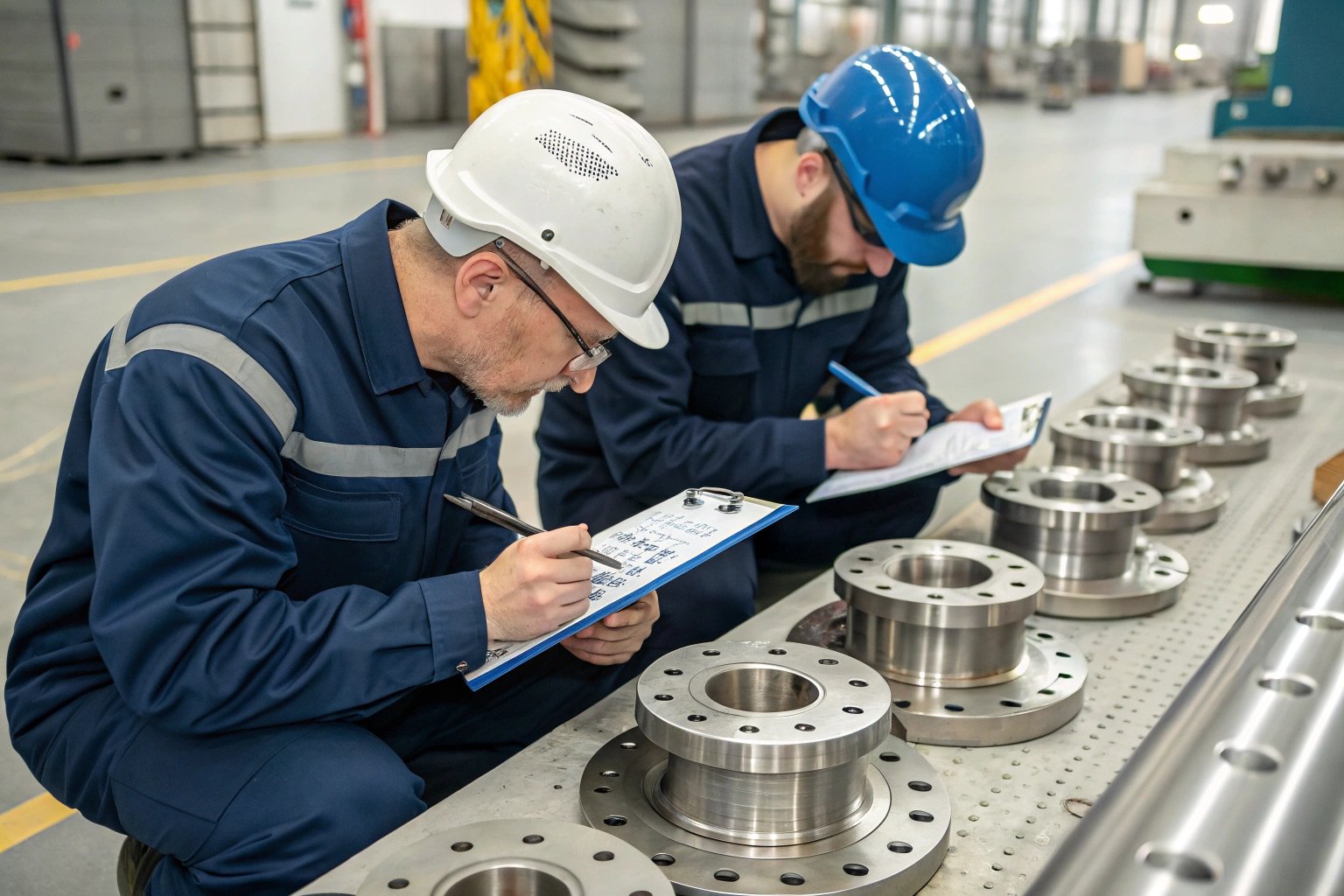
Ensuring the quality of customized metal parts is one of the most critical aspects of manufacturing. As someone deeply involved in sourcing, I know that the process can be challenging, especially when dealing with complex designs or working with suppliers from overseas. But don’t worry, there are effective ways to ensure that your parts meet the required standards every time.
You can ensure the quality of your customized metal parts by establishing clear communication with suppliers, implementing strict quality control processes, and adhering to internationally recognized quality standards.
Ensuring the quality of custom metal parts1 is a combination of supplier reliability2, careful oversight, and rigorous quality checks. But how do you put this into practice? Let’s dive deeper into what you can do to maintain high standards for your metal parts.
How Can You Implement Effective Quality Control for Custom Parts?

Implementing effective quality control is crucial for custom metal parts. By having a robust quality assurance process in place, you can avoid defects, reduce errors, and ensure that every part meets your exact specifications.
Quality control isn’t just about checking parts at the end of the manufacturing process; it starts right from the design stage and continues through every step of production. Here’s how you can implement a comprehensive quality control system.
Clear Specifications and Communication
The first step in ensuring quality is clear and detailed communication with your supplier. You need to provide precise specifications for the parts you want produced. This includes dimensions, material properties, tolerances, and finish requirements. If your supplier understands your expectations from the start, they are more likely to deliver a product that matches your needs.
A common issue when sourcing customized parts from overseas is a lack of clear communication, leading to misunderstandings and mistakes. Make sure to set expectations upfront and communicate any updates or adjustments clearly throughout the project.
In-Process Quality Control
During production, it’s important to perform in-process quality control. This involves inspecting parts at various stages of production to ensure that they are within the required tolerances and specifications. Some quality checks can include:
- Dimensional inspections
- Visual inspections for defects
- Surface finish analysis
- Hardness testing
Many suppliers offer in-process inspections as part of their services. If this isn’t standard, it’s worth discussing with them to ensure ongoing quality assurance during the production process.
| Inspection Stage | Types of Checks | Frequency of Checks |
|---|---|---|
| Pre-production | Design review, material selection | Once before starting production |
| Mid-production | Dimensional checks, surface finish checks | Multiple times during production |
| Post-production | Final inspection, packaging checks | Once after production, before shipping |
Final Inspection and Testing
Before shipping the parts, a final inspection and testing phase should be conducted. This step ensures that the parts meet all required standards and tolerances. Common tests include:
- Mechanical testing (e.g., tensile, fatigue, or impact testing)
- Chemical composition analysis
- X-ray or ultrasonic testing for internal defects
These tests confirm that your custom metal parts are safe, durable, and meet all the engineering requirements.
What Are the Key Quality Standards for Customized Metal Parts?

There are several internationally recognized quality standards that you should require from suppliers to ensure the highest quality for customized metal parts. These standards help maintain consistency and safety while ensuring the parts meet global industry expectations.
To ensure your customized metal parts are reliable and fit for purpose, you need to make sure your suppliers adhere to certain key quality standards.
ISO 9001: Quality Management Systems
ISO 9001 is one of the most widely recognized standards for quality management systems (QMS). It sets out the criteria for ensuring that a supplier consistently meets customer and regulatory requirements. Suppliers who are ISO 9001 certified have demonstrated their commitment to quality through continuous improvement processes.
ISO 2768: General Tolerances for Linear Dimensions
When it comes to custom metal parts, the tolerances can be very specific, especially when dealing with critical dimensions. ISO 2768 sets general tolerances for linear dimensions, angular dimensions, and geometrical tolerances. This standard ensures that parts will fit correctly and operate as intended.
ASTM Standards
The American Society for Testing and Materials (ASTM) provides a comprehensive range of standards for materials, including metals. The ASTM standards cover everything from the properties of steel to testing methods for metal products. Ensure your supplier follows relevant ASTM standards for the type of metal you are using.
| Standard | Description | Applicable For |
|---|---|---|
| ISO 9001 | Quality management system | All industries |
| ISO 2768 | Tolerances for metal dimensions | Precision parts |
| ASTM A36 | Steel standards for structural use | Steel parts |
| ASTM A484 | Stainless steel standards | Stainless parts |
These standards help to maintain consistency, reduce risks, and ensure that the parts meet the expected levels of quality and durability.
How Do You Ensure Quality Consistency Across Different Suppliers?

Ensuring consistent quality across multiple suppliers is essential if you source from different countries or manufacturers. You can achieve this by setting up a robust monitoring system, conducting regular audits, and using quality management systems.
When you have multiple suppliers providing custom metal parts, ensuring consistency can be a challenge. However, with the right strategies in place, you can ensure that the quality remains uniform.
Supplier Audits and Visits
One of the most effective ways to ensure consistent quality across suppliers is by conducting regular audits. You can either perform these audits yourself or hire third-party services to do so. Audits help you evaluate whether the suppliers adhere to your quality standards, manufacturing processes, and safety protocols.
Visiting the supplier’s factory allows you to witness firsthand the methods they use to manufacture parts and the quality checks they implement. This also gives you an opportunity to discuss any issues directly with the supplier and build a stronger relationship.
Implement a Standardized Quality Control Process
Establishing a standardized quality control process for all your suppliers is crucial. By using the same set of requirements, testing methods, and inspection stages, you can ensure that all custom parts—whether they come from different suppliers or locations—meet the same high standards.
A centralized quality management system (QMS) helps track quality across multiple suppliers, ensuring consistency. It also allows you to maintain records of inspections, tests, and audits, which can be useful for future reference.
| Quality Control Method | Description | Implementation Frequency |
|---|---|---|
| Supplier Audits | Evaluate supplier quality systems | Annually or bi-annually |
| Standardized QC Process | Same inspection method for all suppliers | Ongoing, across all suppliers |
| Third-Party Inspections | Independent checks for consistency | As needed, quarterly |
Use Technology for Monitoring and Reporting
In today’s digital age, technology plays an important role in ensuring consistent quality. Implementing software tools for tracking production, inspections, and tests across suppliers helps maintain visibility and control over quality. These tools can automatically generate reports, which can be used to track trends and identify issues before they become larger problems.
Conclusion
Ensuring the quality of your customized metal parts requires a comprehensive approach. By implementing clear communication, in-process quality control, and adhering to international standards, you can maintain high-quality results. Consistency across suppliers can be achieved with audits, standardized processes, and technology. With these strategies, you can ensure that every part you source meets your exact specifications and delivers the performance you need.

